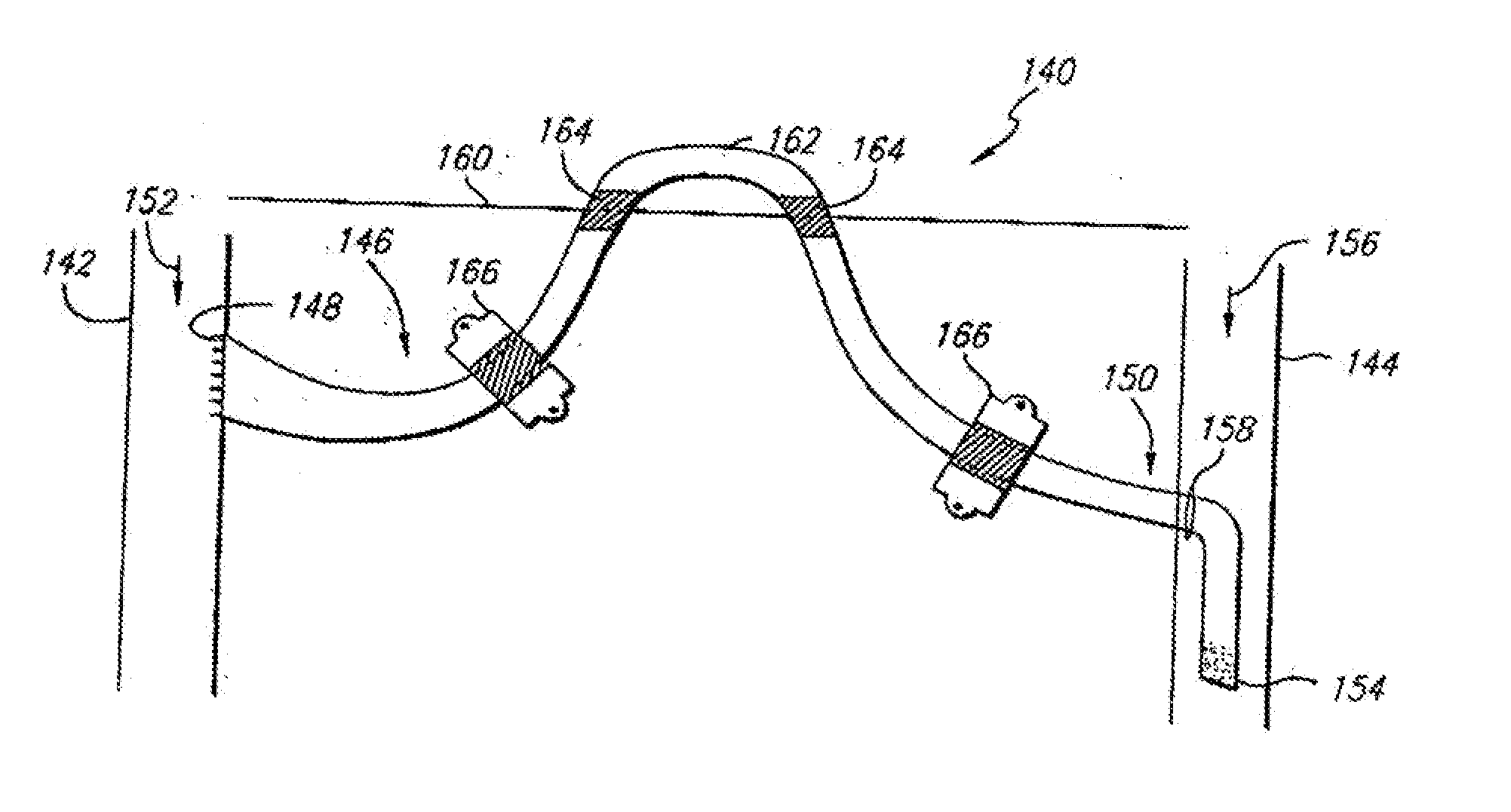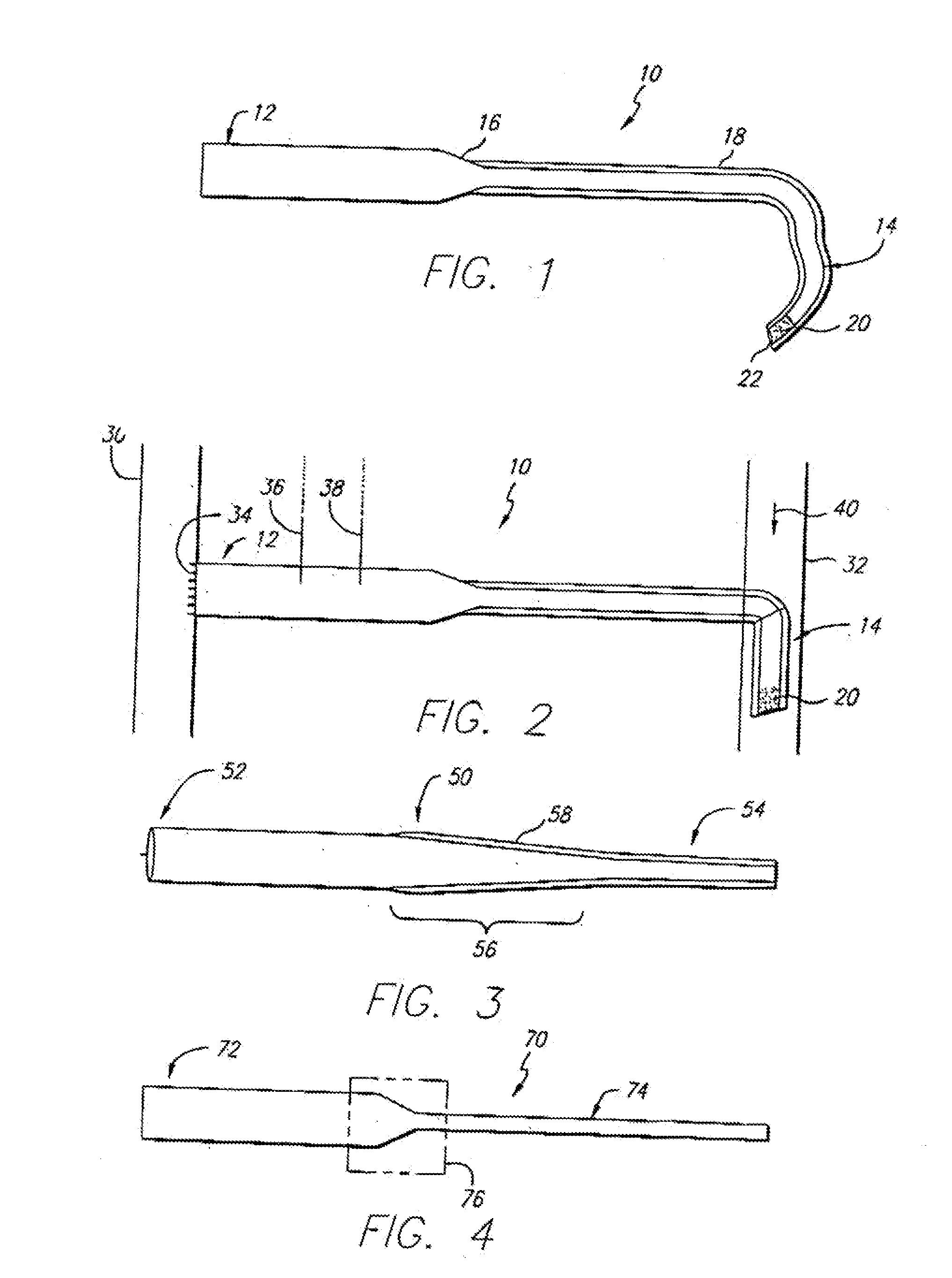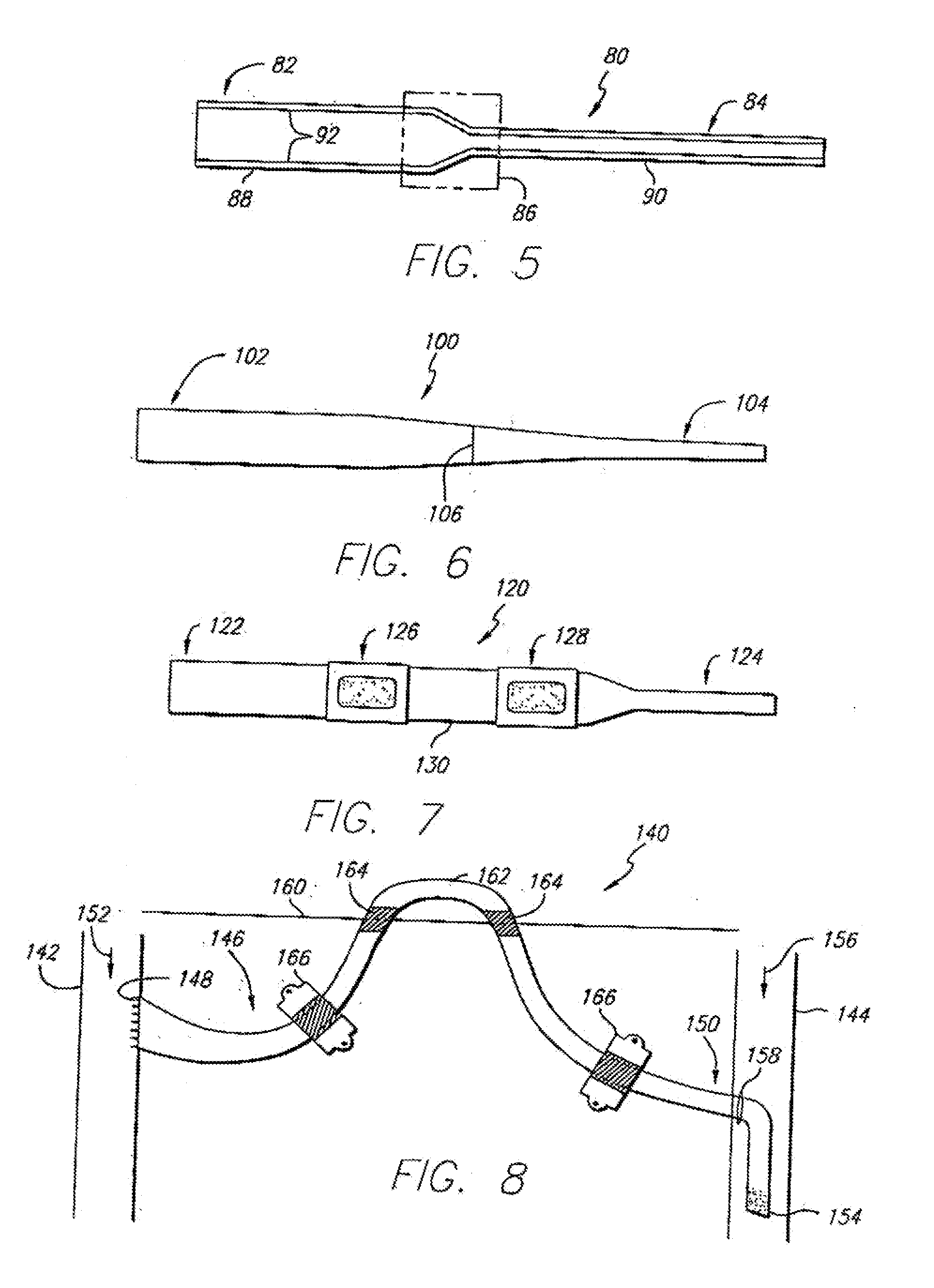Graft-Catheter Vascular Access System
a vascular access system and catheter technology, applied in the field of medical devices, can solve the problems of skin injury, inconvenience for patients, and devices that have experienced, and achieve the effects of avoiding venous anastomosis, preventing thrombosis, and reducing the risk of infection
- Summary
- Abstract
- Description
- Claims
- Application Information
AI Technical Summary
Benefits of technology
Problems solved by technology
Method used
Image
Examples
first embodiment
[0035]Referring first to FIG. 1, a side sectional view of a graft-catheter 10 in accordance with the present invention is illustrated. The graft-catheter 10 has a graft section 12 and a catheter section 14 that is long and flexible. The graft section 12 transitions to the catheter section 14 at a tapered region 16. The diameter of the graft section 12 and the catheter section 14 will vary depending upon the size of the patient and the corresponding artery and vein selected. As an example, the diameter of the graft section 12 may be 5-8 millimeters (mm), the tapered region 16 will taper in diameter over a short segment of the graft-catheter 10, and the diameter of the catheter section 14 may be 2-5 mm. The catheter section 14 may have a plurality of transverse holes 20 for optimal blood dispersion and a beveled end 22 for ease of insertion into a vein (not shown). The beveled end 22 and the plurality of transverse holes 20 allow blood to flow optimally through each and into the vein....
second embodiment
[0039]FIG. 3 shows a side sectional view of a graft-catheter 50 in accordance with the present invention. The graft-catheter 50, similar to the graft-catheter 10, has a graft section 52 and a catheter section 54, but a tapered region 56 tapers in a much more gradual fashion than the tapered region 16 of the graft-catheter 10. The more gradual transition from the graft section 52 to the catheter section 54 provides superior blood flow and improvements in the blood flow mechanics as the blood transitions through the graft-catheter 50 from an artery to a vein. As discussed above, the graft-catheter 50 may be comprised of ePTFE with a polyurethane coating 58 over the catheter section 54 (as shown) or, alternatively, the polyurethane coating 58 may completely coat the graft-catheter 50. Furthermore, the graft-catheter 50 may include an inner polyurethane coating (not shown) as discussed in further detail for certain of the following embodiments.
third embodiment
[0040]FIG. 4 illustrates a side sectional view of a graft-catheter 70 in accordance with the present invention. The graft-catheter 70 has a graft section 72 and a catheter section 74. The graft section 72 may be comprised of ePTFE and the catheter section 74 may be comprised of polyurethane. The graft section 72 may be joined to the catheter section 74 in region 76 by an injection molded hub process, as known in the art. This eliminates having to coat the catheter section with polyurethane, as discussed above, but the graft section 72 may, if desired, be coated with polyurethane to provide stiffness and aid in sealing puncture sites. As an alternative to the injection molded hub process, the graft section 72 may be adhesive bonded or sutured to the catheter section 74 either prior to insertion in the patient or during a surgical procedure to insert the graft-catheter 70 or to replace one of its sections.
[0041]FIG. 5 illustrates a side sectional view of a graft-catheter 80 in accorda...
PUM
 Login to View More
Login to View More Abstract
Description
Claims
Application Information
 Login to View More
Login to View More - R&D
- Intellectual Property
- Life Sciences
- Materials
- Tech Scout
- Unparalleled Data Quality
- Higher Quality Content
- 60% Fewer Hallucinations
Browse by: Latest US Patents, China's latest patents, Technical Efficacy Thesaurus, Application Domain, Technology Topic, Popular Technical Reports.
© 2025 PatSnap. All rights reserved.Legal|Privacy policy|Modern Slavery Act Transparency Statement|Sitemap|About US| Contact US: help@patsnap.com



